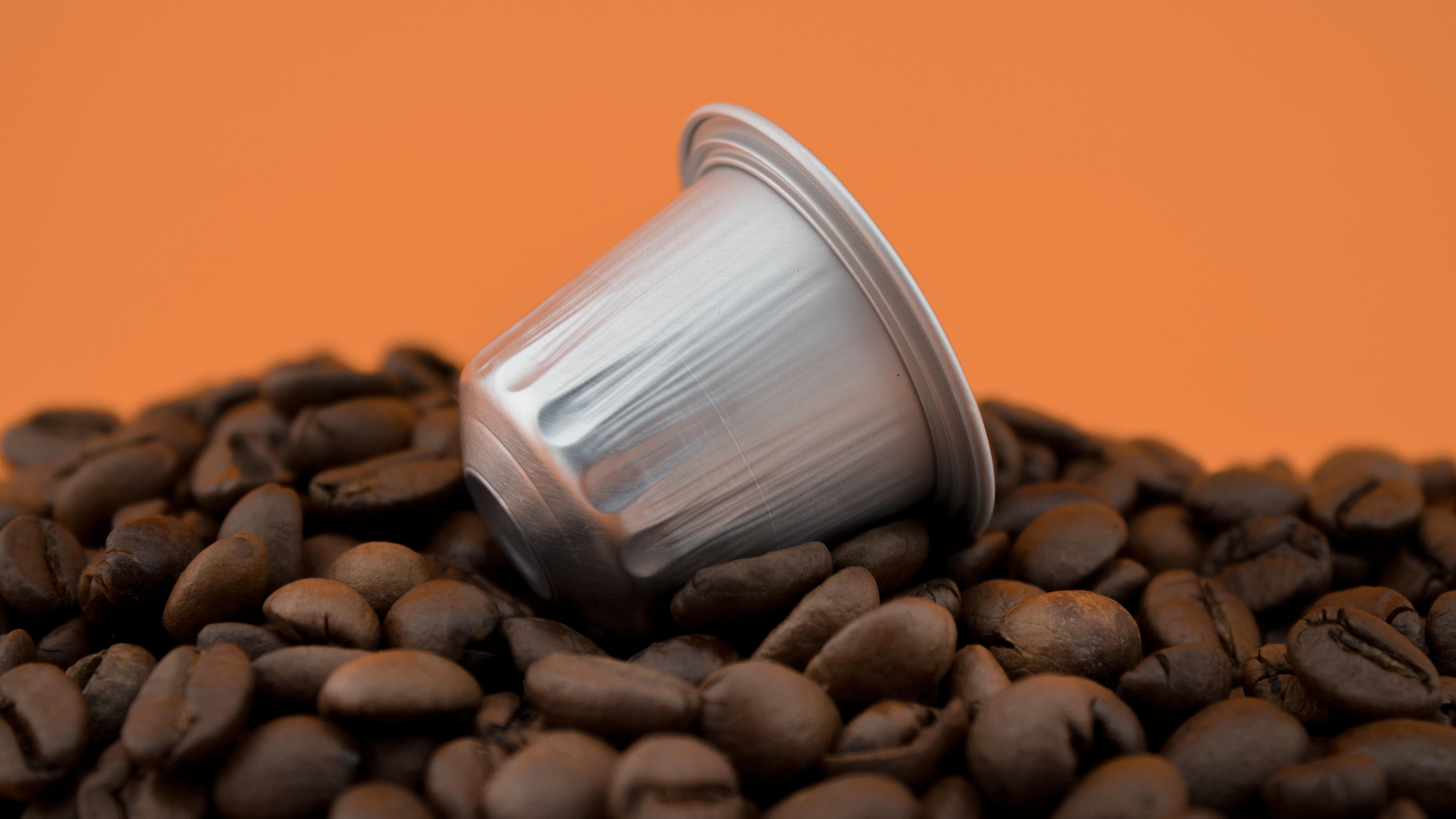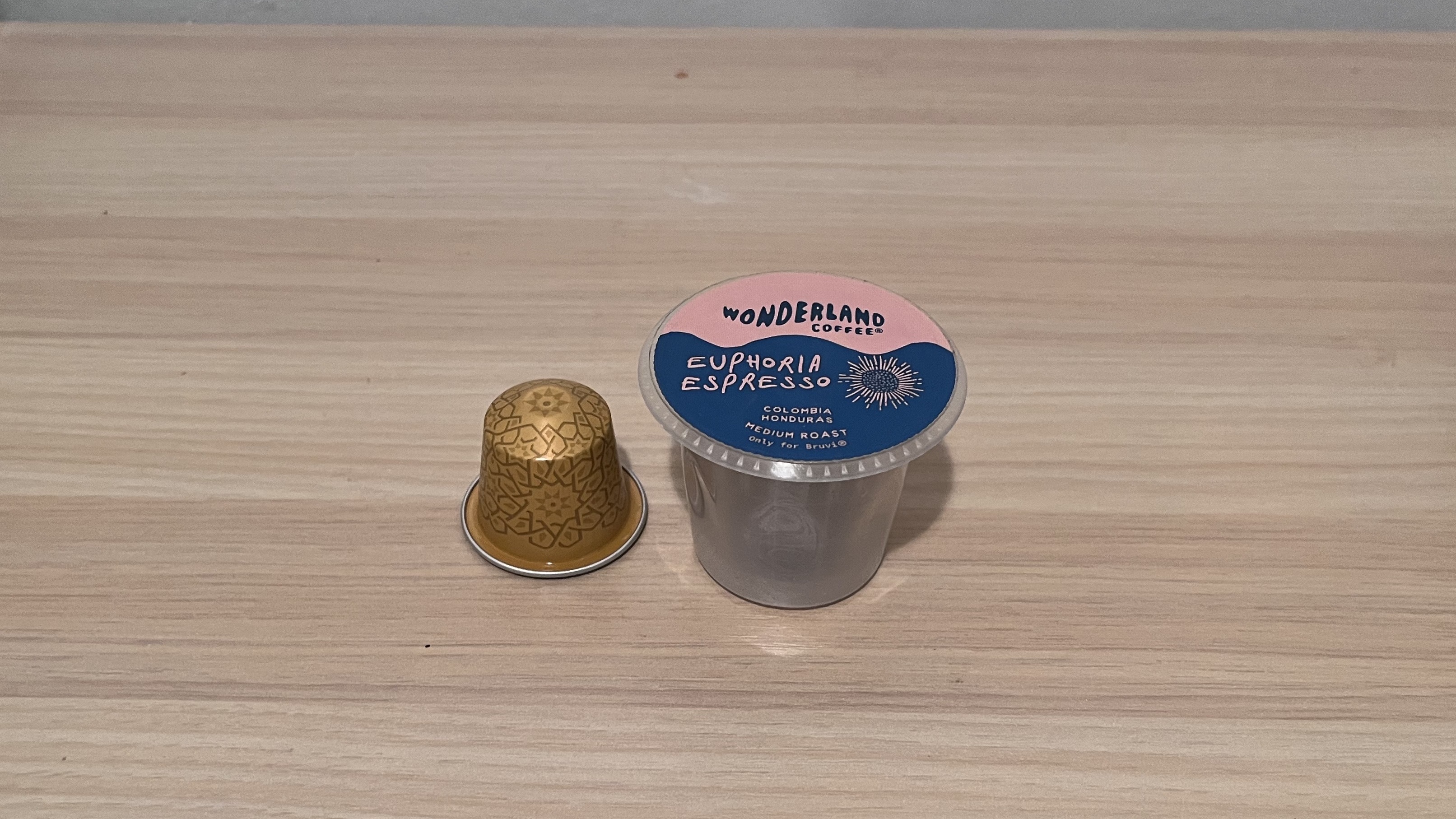What is pod coffee? Experts explain all
Discover the delicious and convenient world of pod coffee

In today's fast-paced coffee culture, pod coffee perfectly embodies the fusion of convenience and quality. Coffee drinkers are drawn to the seamless combination of efficiency and great flavor, making it a favorite among coffee fans seeking a quick and reliable brewing method. Pod coffee machines, with their innovative design and user-friendly features, have become indispensable for those who crave a cup of coffee without the fuss.
While at-home brewers have been around for a while, pod coffee machines didn’t come onto the scene until the '80s. The pioneer in the pod coffee revolution was Nespresso, introducing its first pod coffee machine in 1986. But it was not until the 1990s that the convenience of pre-measured, sealed coffee pods, which eliminated the need for measuring, grinding, or dealing with messy coffee grounds, began to gain widespread popularity. Keurig, another key player in the pod coffee market, introduced its own single-serve brewing system in the late 1990s, further propelling the trend. Since then, an array of manufacturers has joined the pod coffee movement, continually refining technology, expanding flavor options, and enhancing the overall user experience to make pod coffee machines a convenient choice for coffee enthusiasts worldwide.
Whether you are a seasoned coffee aficionado or someone looking to streamline their daily caffeine routine, the array of pod coffee machines discussed here caters to all preferences. We spoke to coffee experts to help navigate through the nuances of pod coffee, and explore the best coffee makers available that promise to elevate your coffee ritual to new heights.

What is pod coffee?
Pod coffee refers to a brewing method that utilizes pre-packaged coffee pods or capsules, which are small, single-serving containers filled with pre-measured coffee grounds. These pods are designed to fit into specific coffee machines, such as pod or capsule coffee makers. The convenience of pod coffee lies in its simplicity – users can easily insert a pod into the machine, press a button, and enjoy a freshly brewed cup of coffee without the need to measure or grind coffee beans. Popular pod coffee systems include those produced by Keurig, Nespresso, and other manufacturers such as L’OR and Bruvi, offering a wide variety of coffee flavors and blends in convenient, portion-controlled packages.

“As the brewing process in coffee pod systems is completely automated, there is little room for error compared to other brewing methods. By pressing a button, users choose their preferred cup size or volume and kick off the brewing process,” says Theresa Schlage, passionate coffee expert, and author of the blog thewaytocoffee.com. “The extraction process, including water flow and temperature, is strictly controlled by the machine. This leads to consistent results in the cup time and time again. In contrast, a professional espresso machine requires manual or semi-automatic operation, demanding skills to achieve good results consistently.”

Theresa Schlage is a passionate coffee expert, and author with over eight years of experience in the coffee industry. She runs her own blog, thewaytocoffee.com, which serves as a knowledge platform for coffee enthusiasts and professionals alike, offering insights into coffee culture, brewing techniques, and the latest trends in the industry.
While pod coffee offers convenience and a quick brewing process, it has faced criticism for environmental concerns associated with the disposal of the non-biodegradable pods. Some companies have introduced recyclable or compostable pod options to address these issues. Additionally, some coffee enthusiasts argue that pod coffee may compromise the overall coffee quality compared to traditional brewing methods that involve freshly ground beans and precise water temperature control.
Oli Baise, barista and the founder and managing editor of coffee blog Drinky Coffee, says that “pod espresso lacks the finish of freshly ground espresso” because “the second coffee beans are ground, the flavorful compounds within them start to oxidize away. This means that they lose their complexity of flavor the longer they have been sitting in the pod.”
Sign up to receive the latest news, reviews, buying guides and deals direct to your inbox

Oli Baise is a barista and the founder and managing editor of coffee blog Drinky Coffee. Baise’s parents run a coffee shop called The Coffee Traveller in London and he has been a barista there since he was 14 years old. His blog, Drinky Coffee, “is the ultimate resource for coffee lovers who want to learn how to make café quality coffee at home.”
Baise added, “the biggest difference you'll notice between an espresso brewed from a pod (such as Nespresso) and an espresso made from freshly ground coffee is that the freshly ground espresso has a much longer finish, meaning that its flavor lingers in your mouth for much longer than the pod espresso.”
According to Schlage, the caffeine content in pod coffee is contingent upon both the specific coffee type and the quantity present in each pod. Arabica coffee pods, on average, contain caffeine levels ranging from 1.1% to 1.7%, while the variability in Robusta coffee can result in caffeine concentrations between 2% and 4.5%. The caffeine content within a coffee pod depends on the coffee variety selected and the particular proportions encapsulated in the pod.
“Generally speaking, caffeine levels of espresso extracted using professional espresso machines are higher than that of coffee pods, as espresso is more concentrated and uses a higher dose of coffee. Ristretto has the highest caffeine content on a per-volume basis,” says Schlage. “Filter coffee, on the other hand, has a lower caffeine content than pod coffee. However, taking the serving size into account, a large cup of filter coffee can contain more caffeine than pod coffee.”

Alexandra Pamias, a freelance writer from New York City, specializes in kitchen and home appliances. Known for her expertise in maintaining a pristine living space, she reviews various products for Homes & Gardens, Real Homes, Tech Radar, and Top Ten Reviews, including thoroughly testing coffee makers.
